Planning and prepping differentiating math centers can feel like a full-time teaching job in and of itself. In your classroom, you probably have anywhere from 2-5 unique groups of learners when you introduce each of your math topics throughout the year. These groups range in ability level and independence level and it might feel like the best way to maximize their math learning is to offer each of these unique groups personalized math centers that meet their needs.
When you successfully plan and execute differentiated math centers you see your students far more engaged, and that they have a deeper understanding of the concepts from that day’s lesson.
You probably also walk away wondering how on earth you’re going to recreate the math magic you just pulled off. It takes an incredible amount of prep, coordination, and organization that might not feel sustainable for just one of the many subjects you teach every day.
The key to keeping that overwhelm at bay is using consistent routines and frameworks like Math Workshop to make your differentiated math centers more manageable.
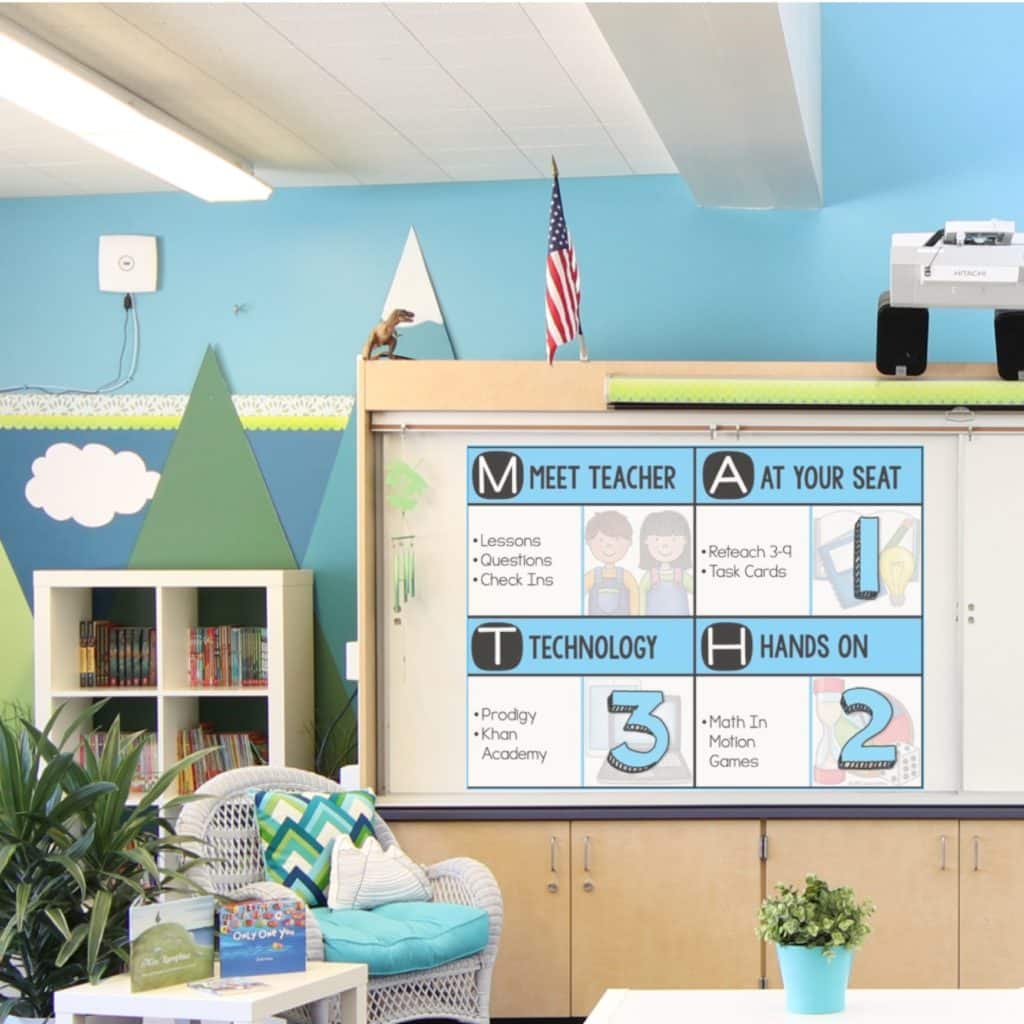
What Is Differentiated Math Workshop?
Math Workshop is a framework that allows students to learn new math content each day, practice math strategies through a variety of activities, and reflect on learning through verbal or written sharing. The predictable structure of Math Workshop makes it easier for students to participate in differentiated math centers with a high level of independence.
The components of Math Workshop include:
- Daily math warm-up (10-15 minutes)
- Mini-lesson (10 minutes)
- M.A.T.H. practice time (40 minutes)
- Share (5-10 minutes)
Daily Differentiated Math Centers Warm Up
This is a time when students are provided spiral review and routine practice with challenging skills that require repetition to achieve mastery. Your math adoption may have a strong spiral review component that can be utilized, or you may be interested in differentiating your warm-up through an activity like Number of the Day.
You can learn more about why I prefer the Number of the Day option by reading this post about a differentiated math morning routine you and your students will love.
Make it a goal to have your students complete their daily math warm-up activities with complete independence to set a positive tone for their differentiated math centers each day.
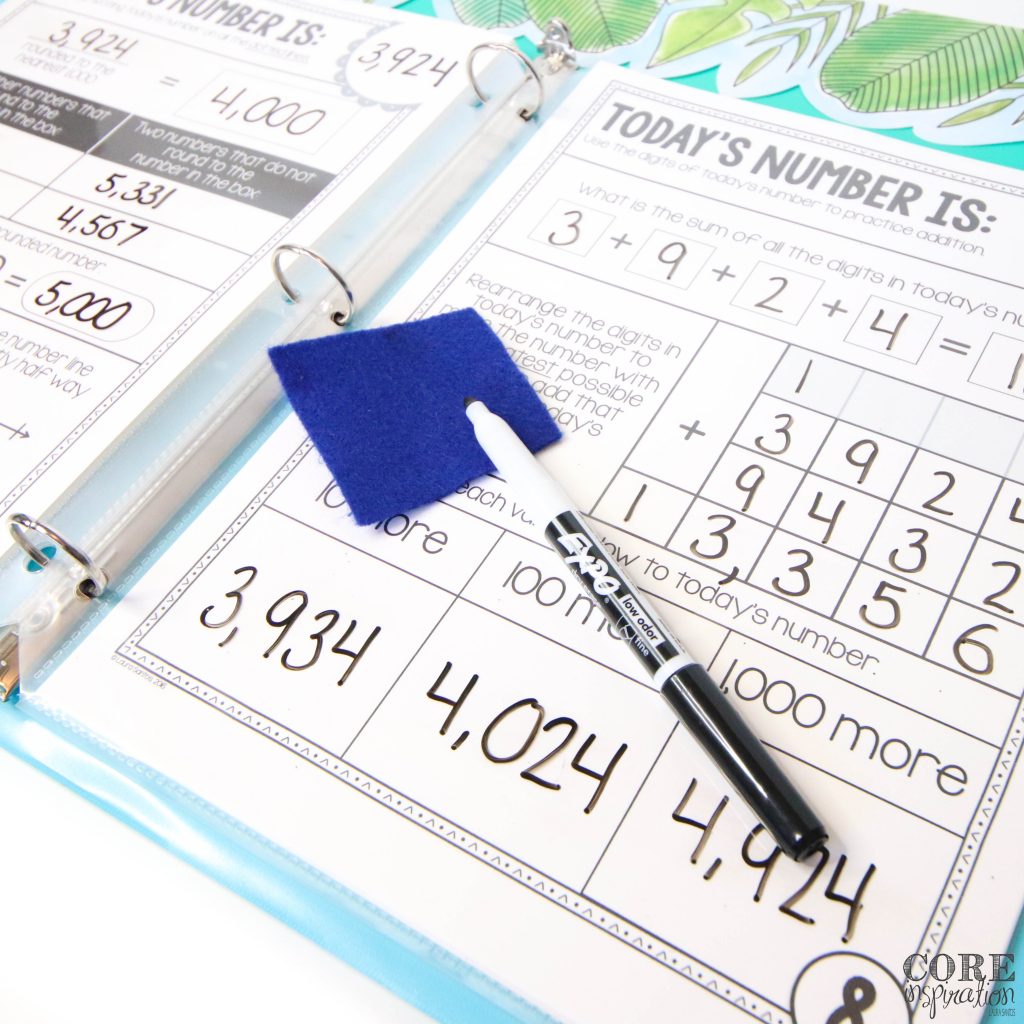
Math Mini Lesson – A Time To Collect Quick Data For Your Differentiated Math Centers
After their warm-up each day, students participate in a 10 minute lesson when you introduce and model the new math concepts they’ll be practicing that day. This is one of two very brief times when all students are potentially working on the same activity simultaneously. This is also a time when students can work through personalized lesson sequences using Khan Academy, Front Row, Brain Pop, or your video lessons recorded using a tool like Educreations.
To learn more about these different mini-lesson approaches, click here.
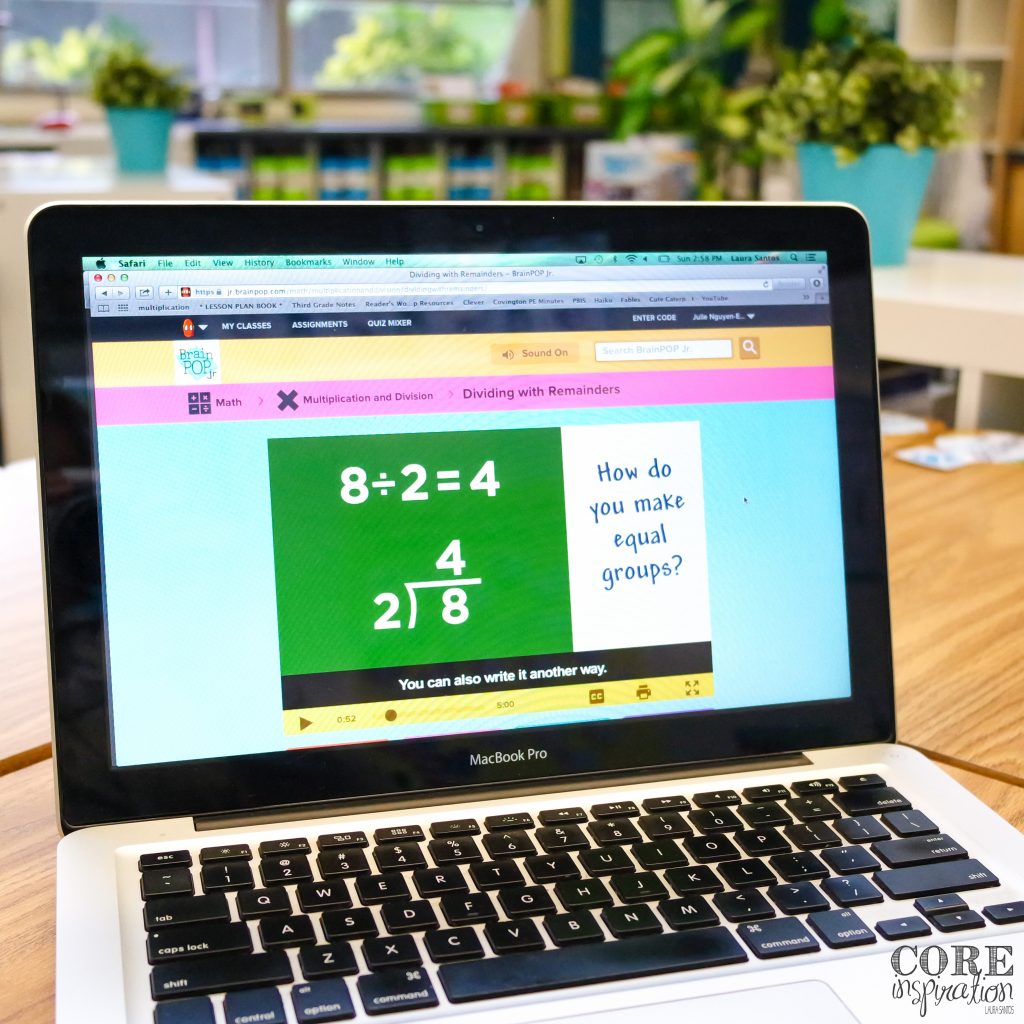
Differentiated Math Centers – Their Daily Practice Time
Following their daily math lesson, students have an extended block of time when they complete their differentiated math centers. During these center rotations, students:
- practice the new math skills taught that day
- build their problem-solving skills with strong word problems
- get hands-on math practice
- work on real-world math projects
- complete assessments
- use technology to practice math skills
- receive small group or one-on-one follow-up instruction for that day’s lesson
How is it possible for different students to be working on such a wide variety of math activities simultaneously? These activities are organized into the following categories, stations, or rotations to simplify the flow and organization of this large block of differentiated math centers work time:
M – Meet With The Teacher Rotation
Students receive differentiated instruction from you. You can either schedule specific small groups to work with each day, or formatively assess students as they work and pull individuals and small groups as needed.
For more tips on organizing small groups for differentiated math centers, click here.
If you are interested in learning five tips for efficient data tracking during differentiated math centers, read this post.
A – At Your Seat Rotation
Students work to build their math reasoning, modeling, and problem solving skills. This is a perfect time for students to work on differentiated math centers that match their specific skill levels. Student independence is a central focus of at-your-seat work.
To learn how to boost student independence during differentiated math centers, read this post.
Resources used for the at your seat rotation might include:
- Practice and enrichment sheets from your math adoption for math drill and equation practice.
- Problem Solving Task Cards for practice with performance tasks, word problems, math modeling, and writing about math reasoning.
- Project based learning units to apply math concepts to real-world situations and provide cross-curricular integration.
- Performance tasks
- Math Journals
- Collaborative math puzzles
To read about each of these at-your-seat activities in detail, click here.
T – Technology Rotation
Students build math fact fluency using differentiated math websites or apps. Websites used in your classroom, depending on the unit might include:
- IXL
- Xtra Math
- Khan Academy
- Quick Math
- Hungry Fish
- Multiplication.com
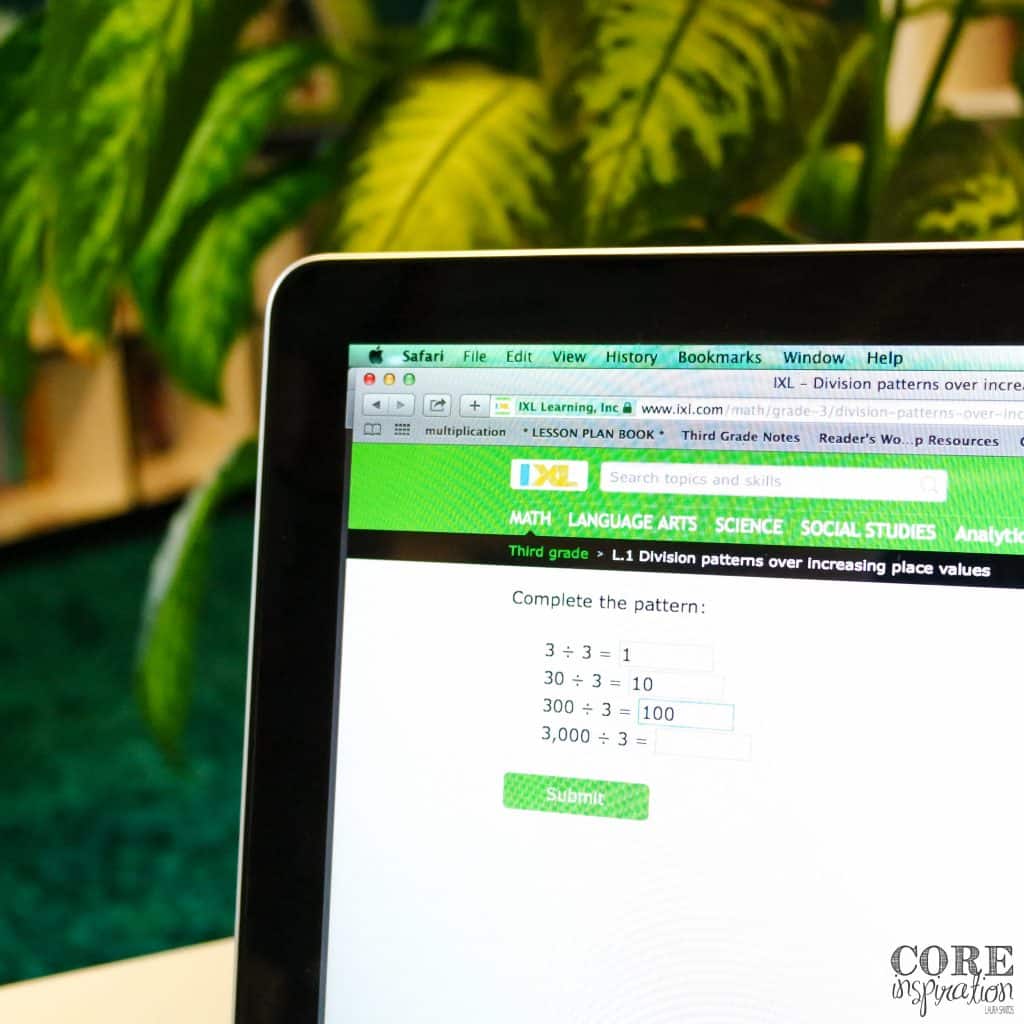
H – Hands-On Rotation
During this rotation, your students will build math reasoning and fact fluency as they play differentiated math games. Providing students with game cards that feature student-friendly language and a consistent format boosts their independence and on-task play time during this more active rotation of math workshop.
To read tips about consistently introducing new games to your students, fostering collaborative gameplay, and boosting overall math game success, check out this post.
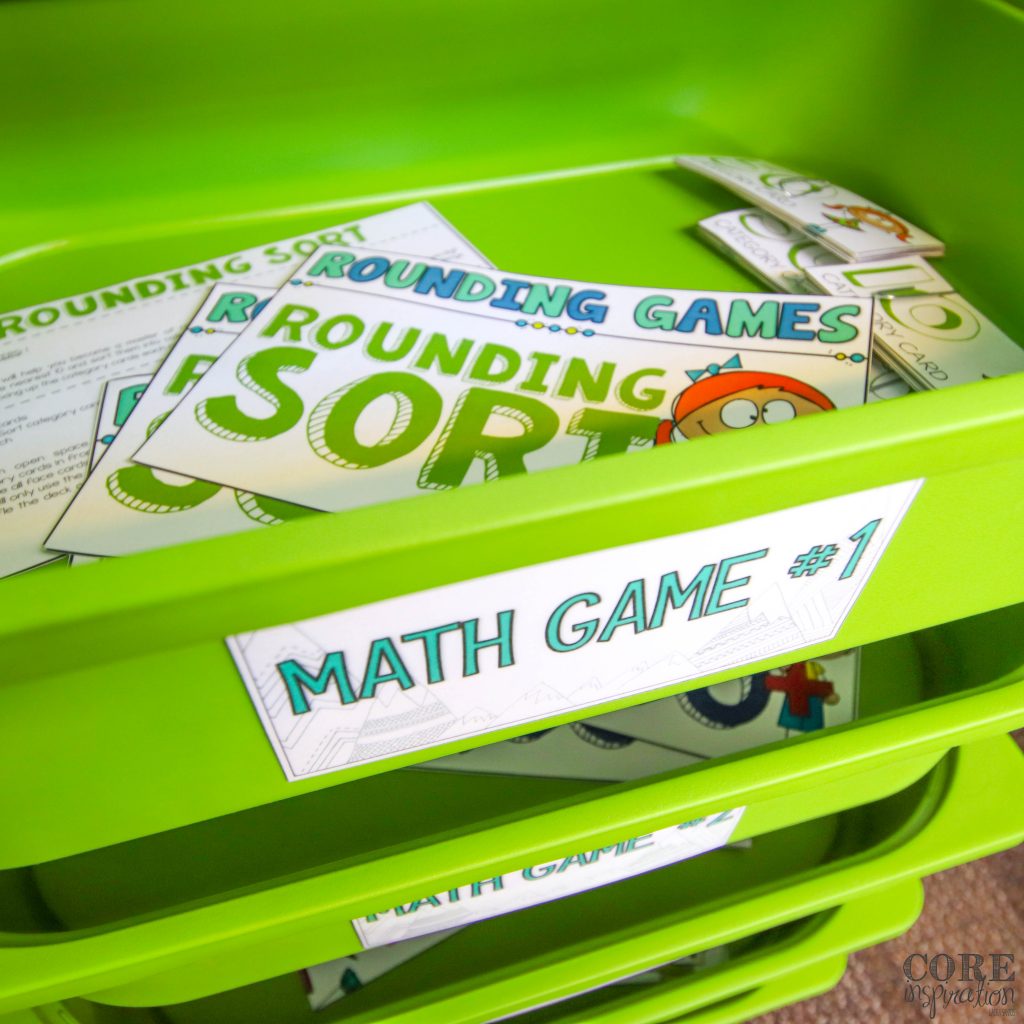
Organizing Student Groups for Differentiated Math Centers
To maximize efficiency and focus in the classroom, try grouping students based on a pre-assessment. The groups you form can work through the activities described above at assigned times each day. This approach minimizes overcrowding at your differentiated math centers and provides balance in the type of differentiated math practice students take part in each week.
The schedule template above can provide each group with an equal opportunity to visit each station. To access this editable schedule template and a set of printable number desk tags, click here.
To read all the details about how you can organize groups and set your schedule, check our this post about differentiated math grouping.
End of Math Workshop Share-Out
At the end of math workshop each day, students take a moment to reflect on the math progress they’ve math and share their thoughts verbally, or in writing. This is the second brief time when all students are potentially working on the same activity simultaneously. A few methods for sharing include:
- Buddy share out: share a reflection or the response to a specific question with a math buddy.
- Whiteboard share: write a reflection or share a response on a whiteboard.
- Journal share: write a reflection or share a response in a journal.
- Exit Ticket: write the response to a specific question on a whiteboard, or on a slip of paper.
- Whole class share out: take a moment to reflect silently, then share a reflection with the class.
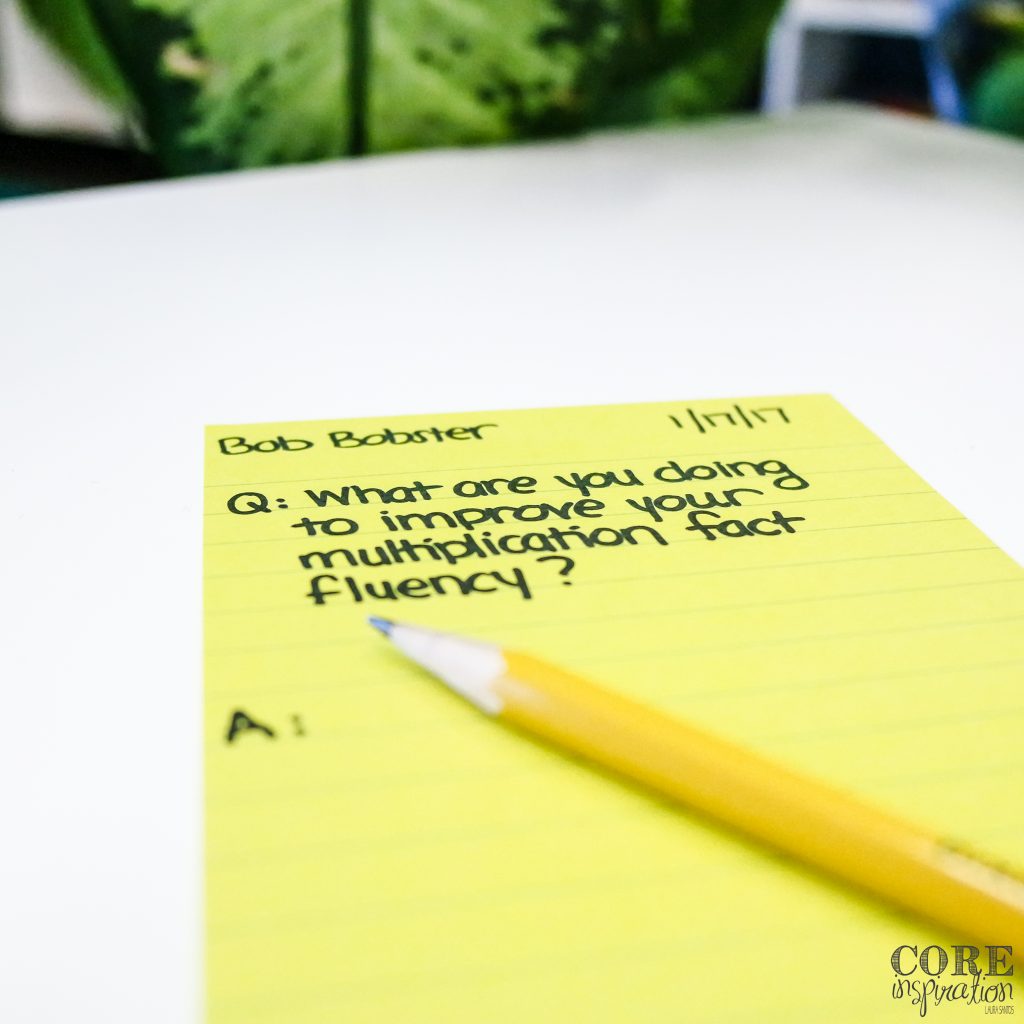
The Benefits of Differentiated Math Centers
Implementing differentiated math centers using the Math Workshop framework in your classroom can help transform your math block from something that feels chaotic and tedious to prep into a simple part of your daily schedule that everyone enjoys.
Your students will be more engaged in their math block because they get to participate in a variety of activities each day. Student achievement will grow because students are engaged in differentiated math work that is just right for them.
Your math prep time will be minimal because you’ll rarely need to change centers, print materials, or prep elaborate lessons. Plus, you’ll have more assessment data because you’ll interact with students and can provide them with support at their level.
Interested In Learning More About Differentiated Math Centers & Math Workshop?
For more details about implementing differentiated math centers using the Math Workshop framework, check out my other posts about this instructional approach.
How To Introduce Differentiated Math Workshop In Your Classroom:
- Week 1 of Differentiated Math Workshop
- Week 2 of Differentiated Math Workshop
- Week 3 of Differentiated Math Workshop
Details About Differentiated M.A.T.H. Rotations:
- Overview: Make Differentiated Math Centers Simple With Math Workshop
- Warm Up: Number of the Day Binder
- Mini Lesson: 3 Approaches To Formatting Lessons for Math Workshop
- Meet with the Teacher: How To Organize Small Groups for Math Workshop
- Meet with the Teacher: 5 Steps To Efficient Data Tracking
- At Your Seat: Top 5 Ideas for Math Workshop At Your Seat
- At Your Seat: Boost Problem Solving Skills
- Hands On: Tips for Making Math Games A Success
Math Workshop Classroom Management Tips:
- How To Boost Student Independence With Math Triads
- Incorporating Project Based Learning Into Math Workshop
- How To Make Transitions Efficient During Math Workshop
Ready To Try Differentiated Math Centers In Your Classroom?
If you want to start using the Math Workshop framework in your own classroom, grab your Math Centers & Math Workshop Toolkit, and share questions you have about implementation in the comments below.
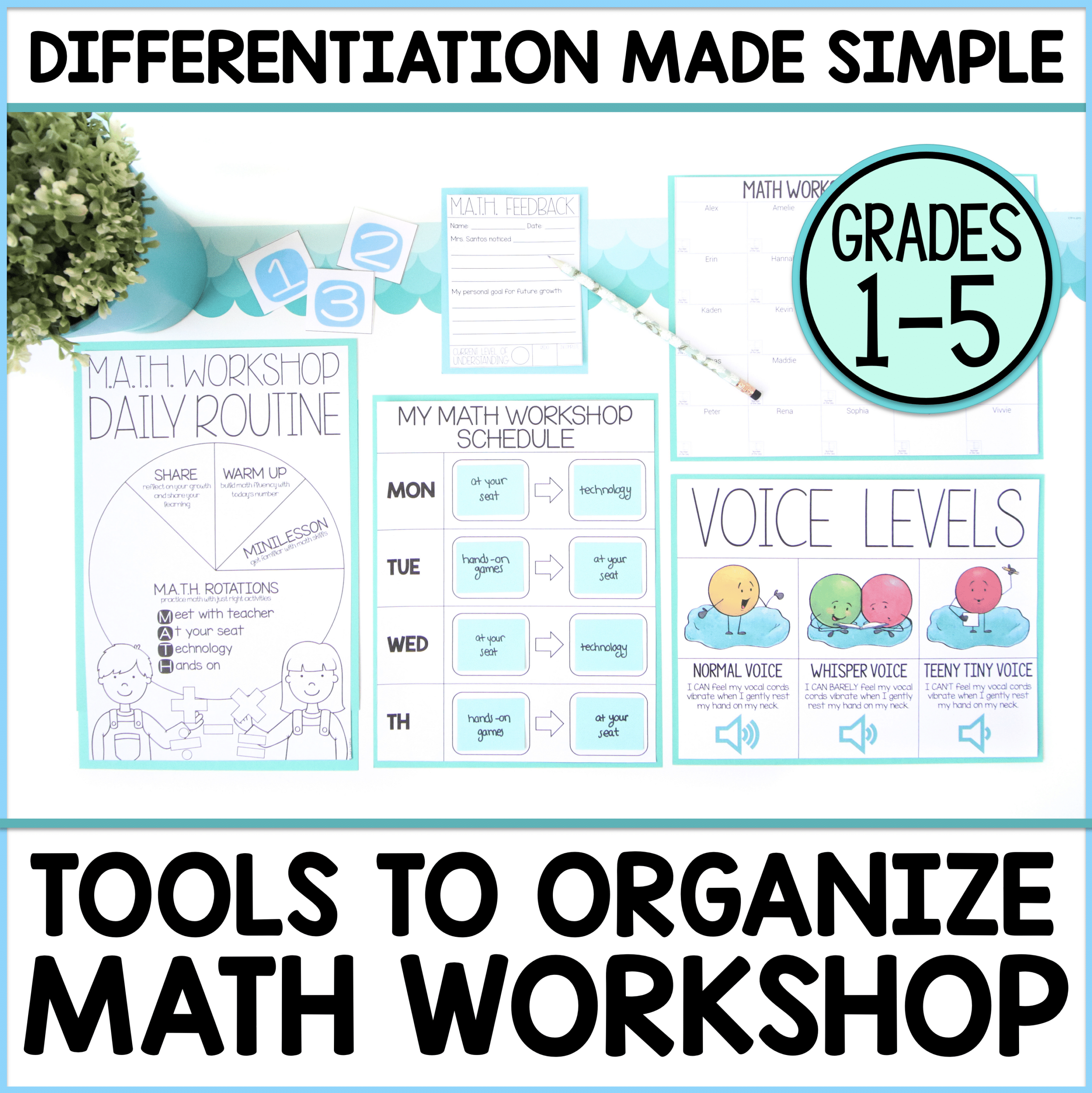

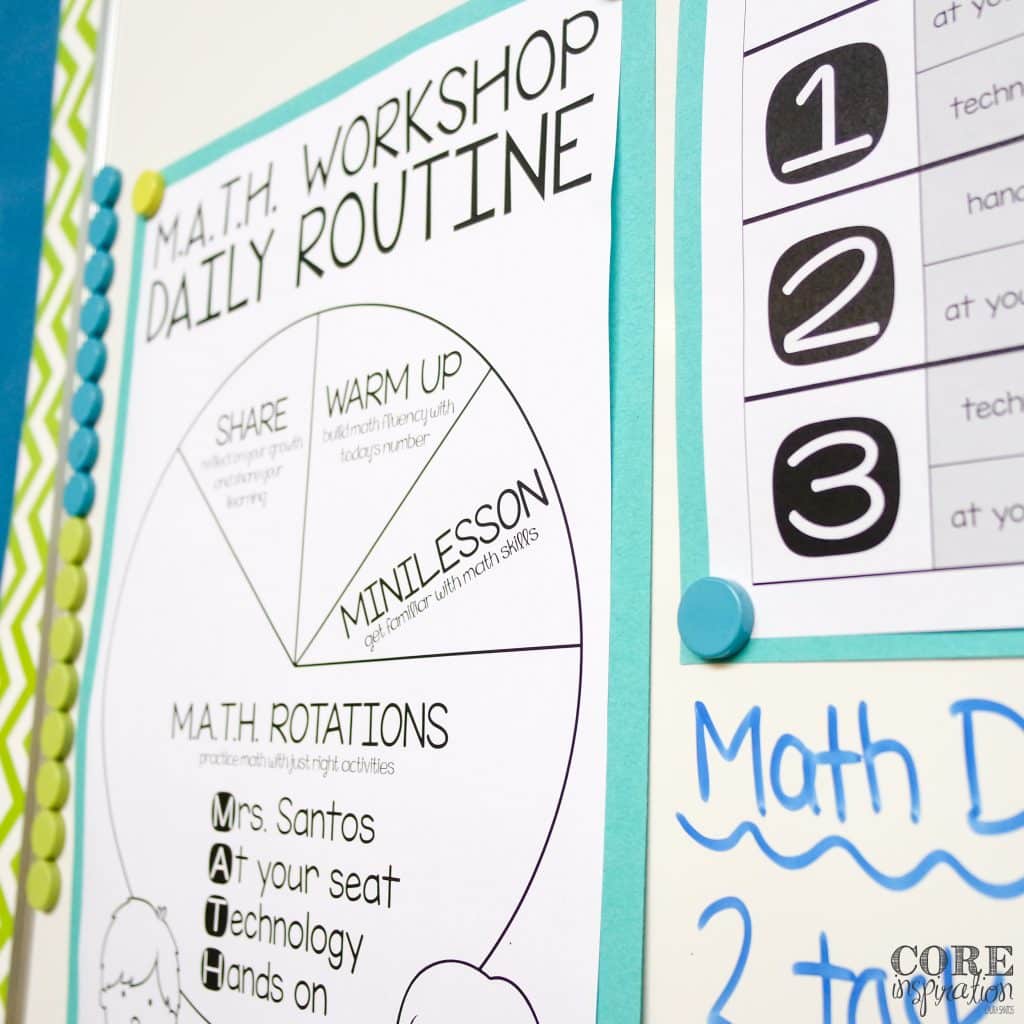
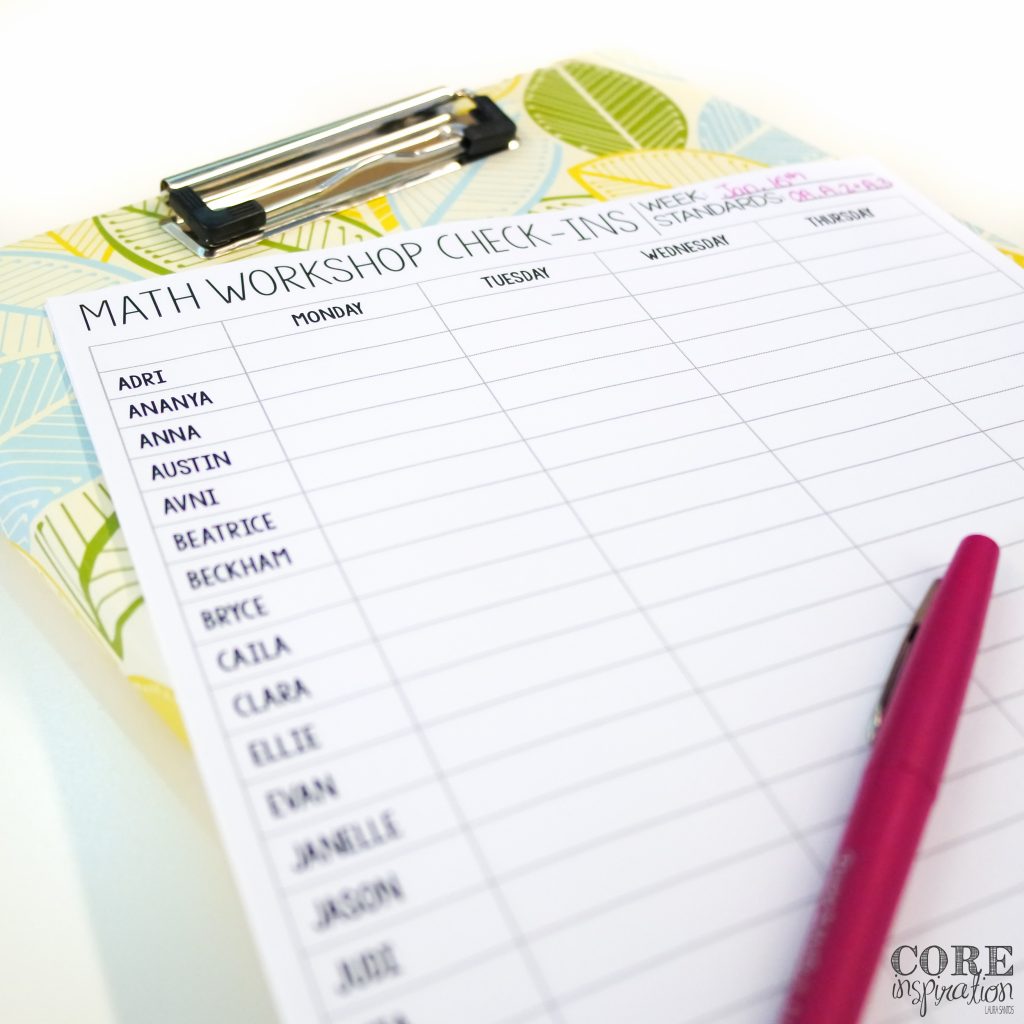
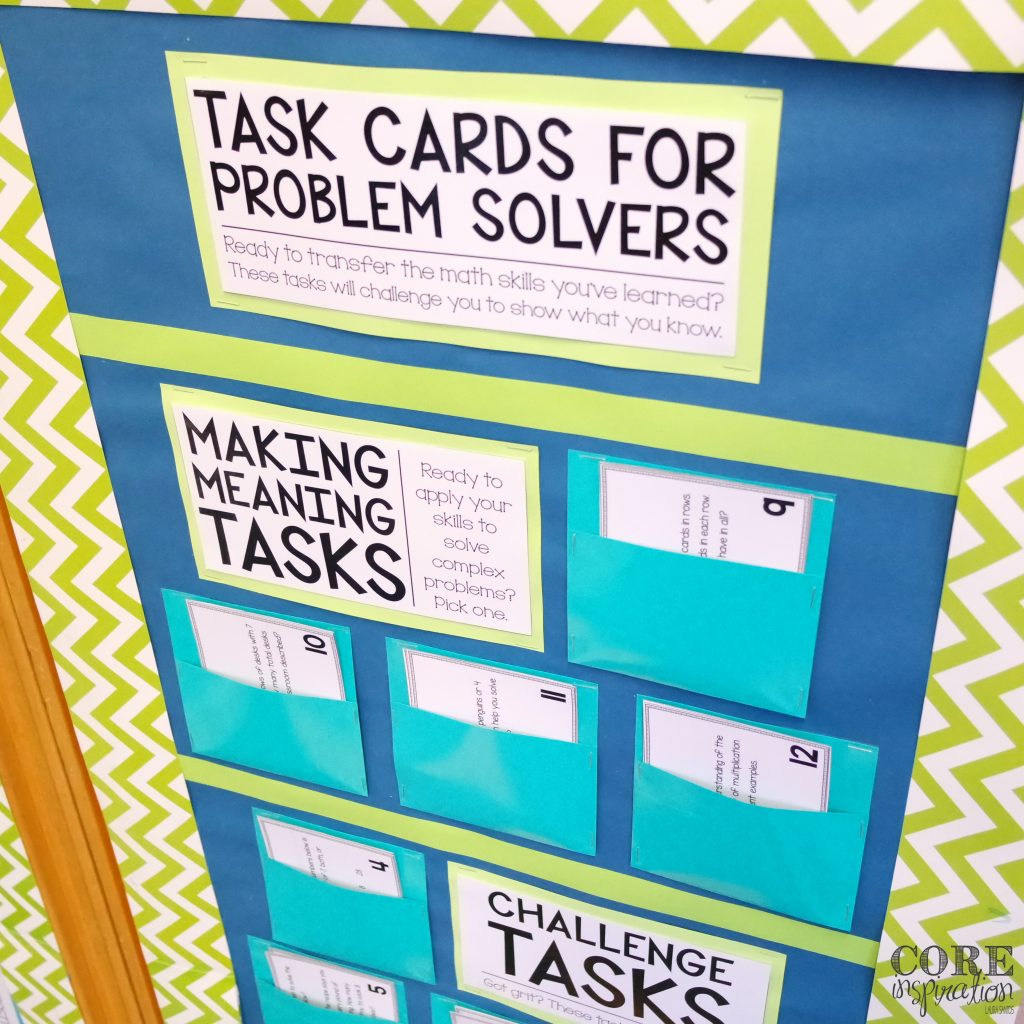
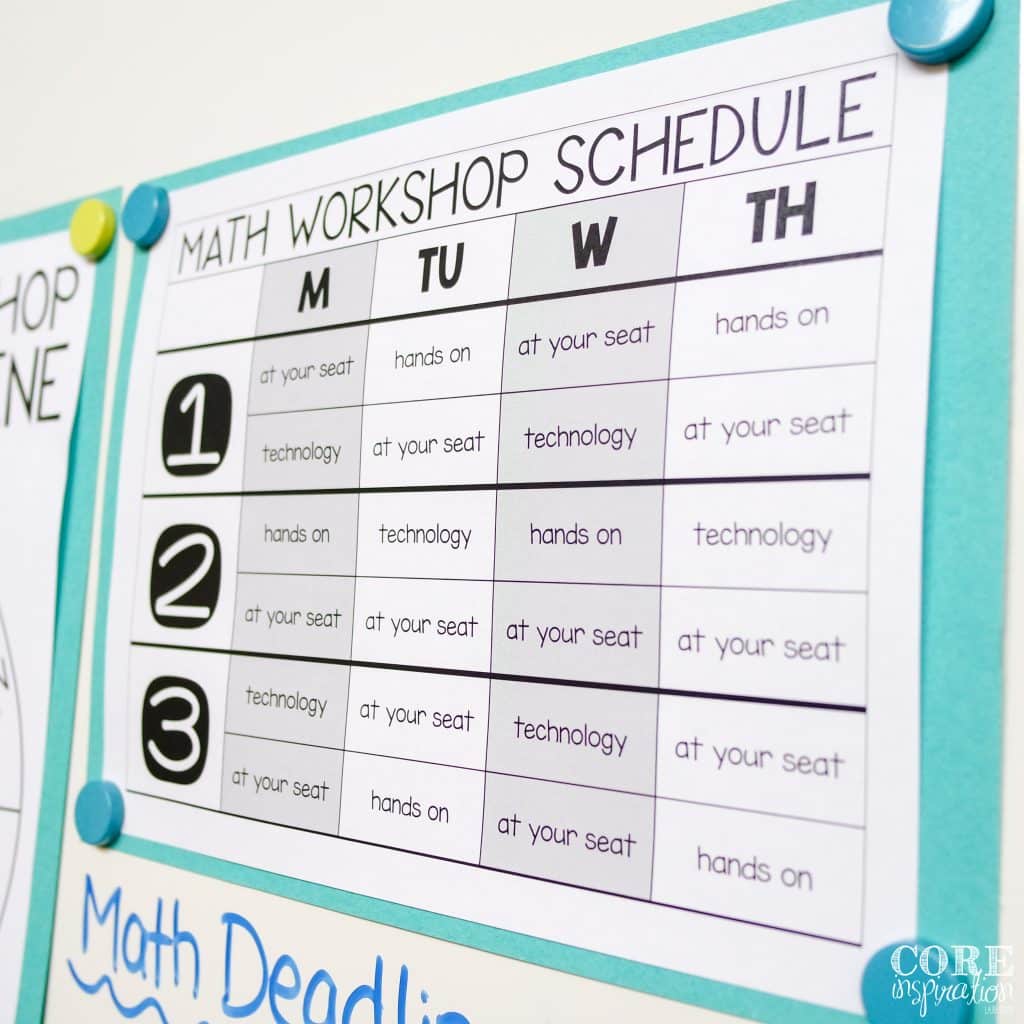
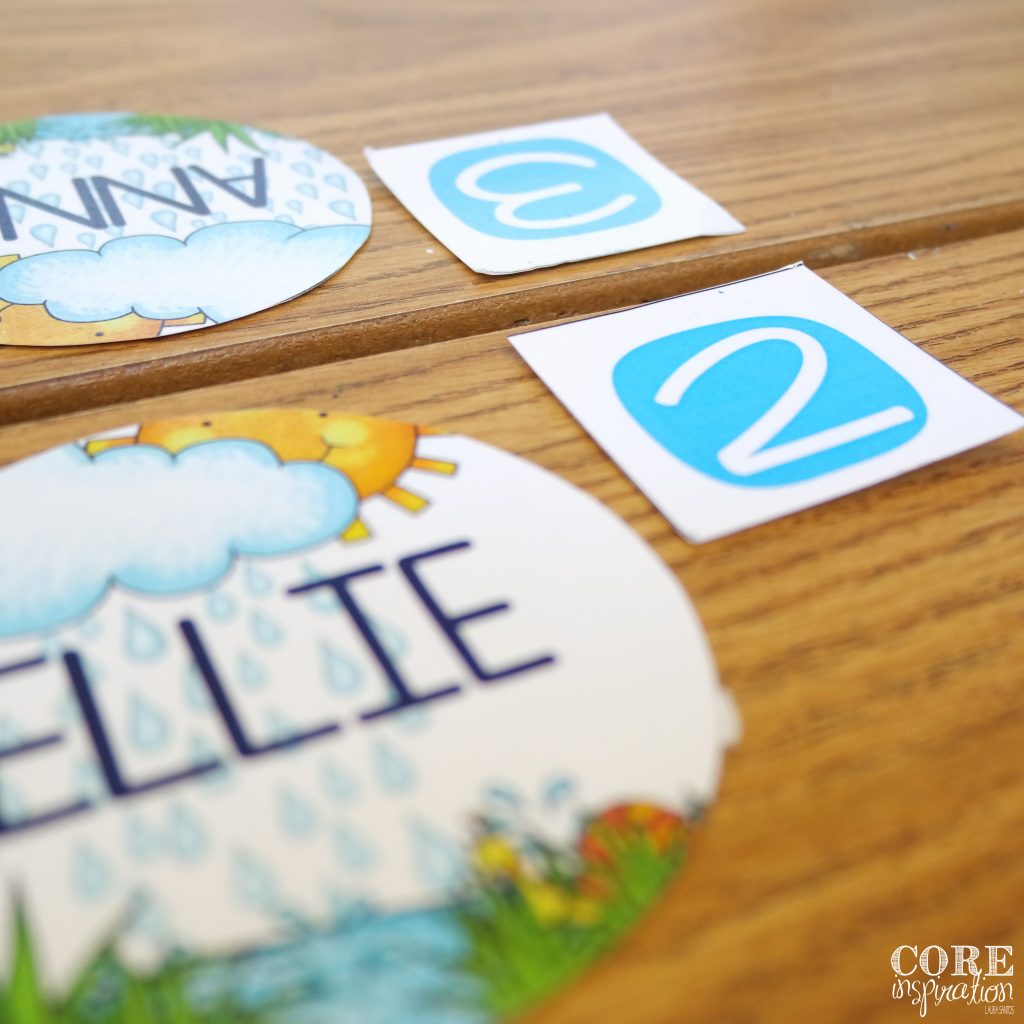

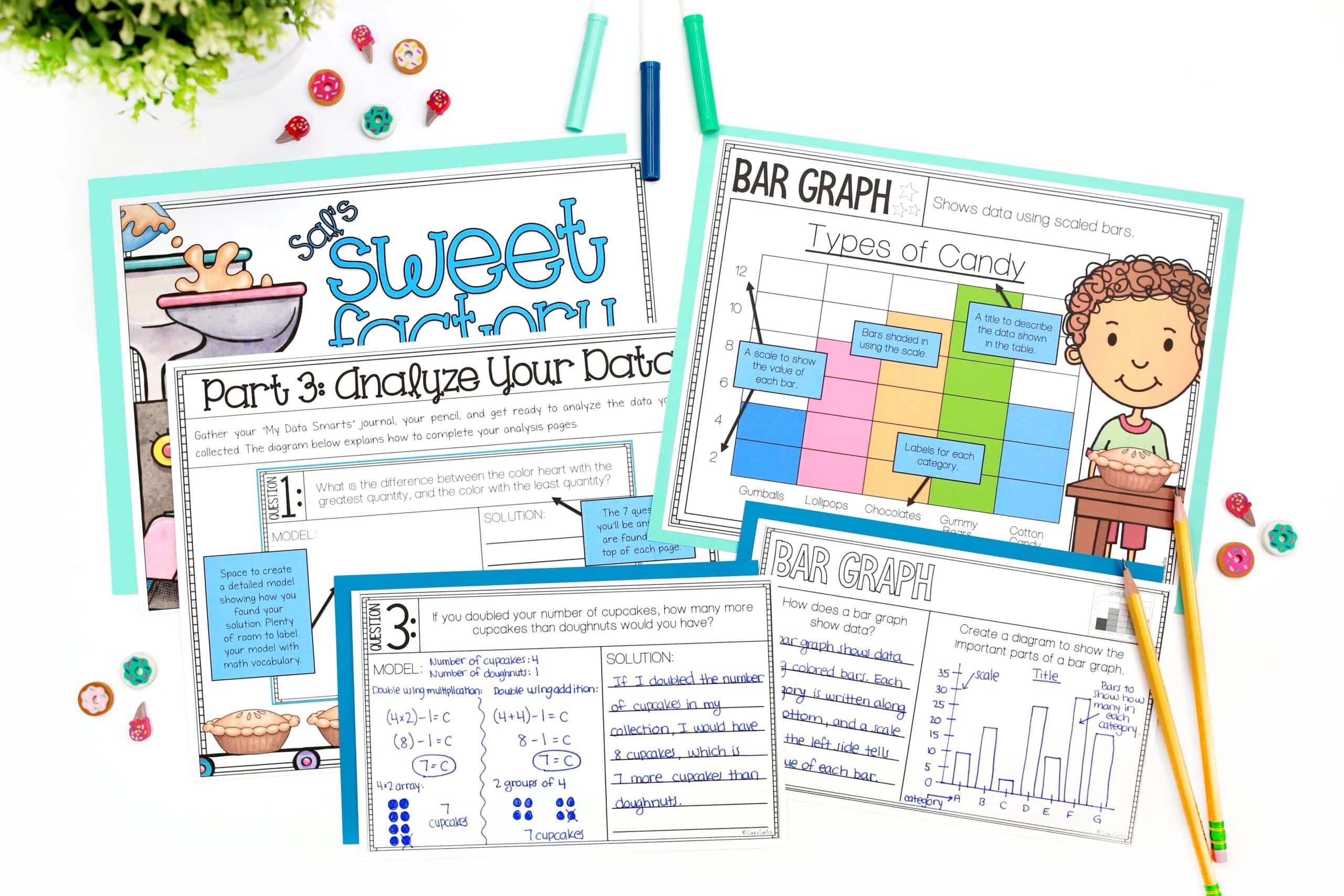
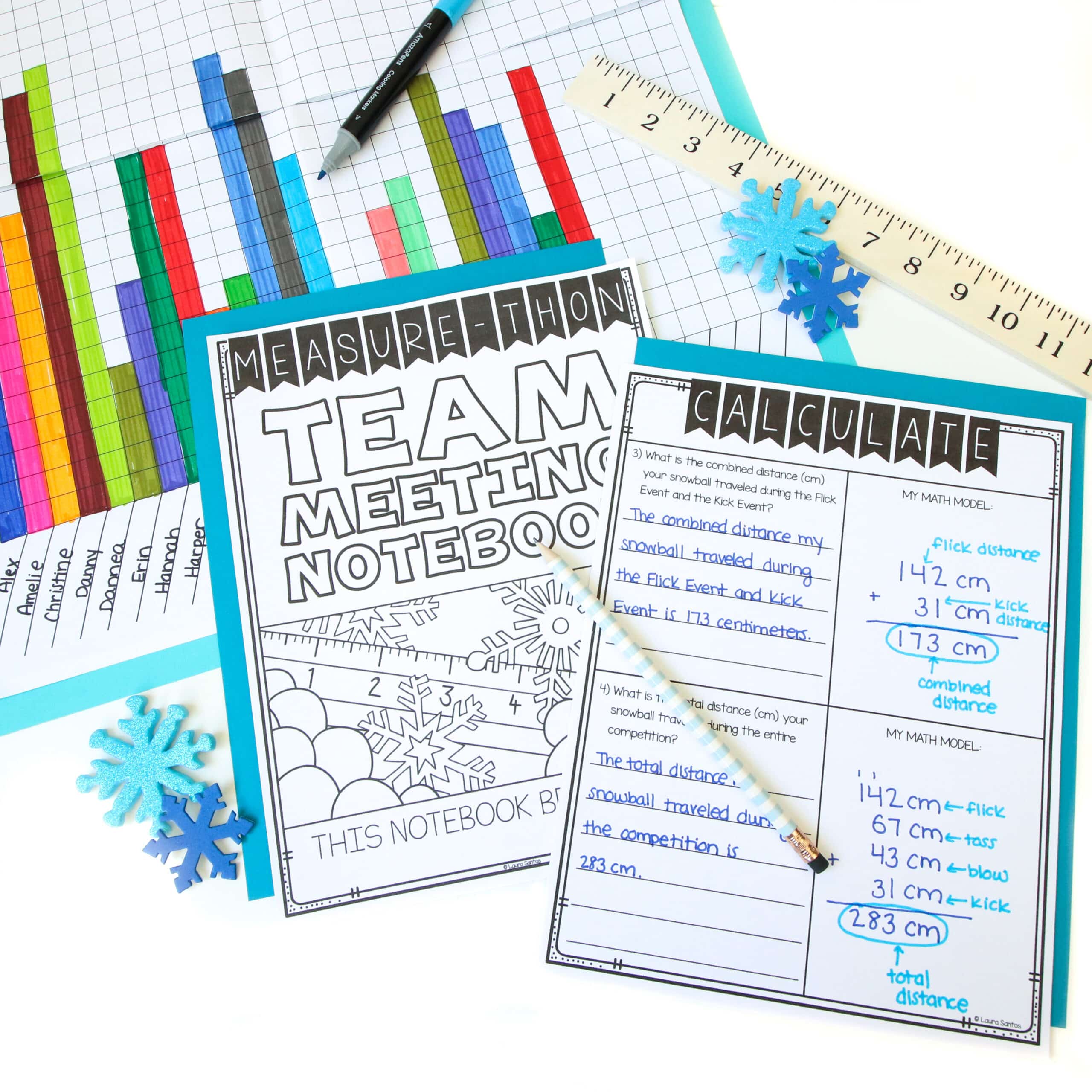

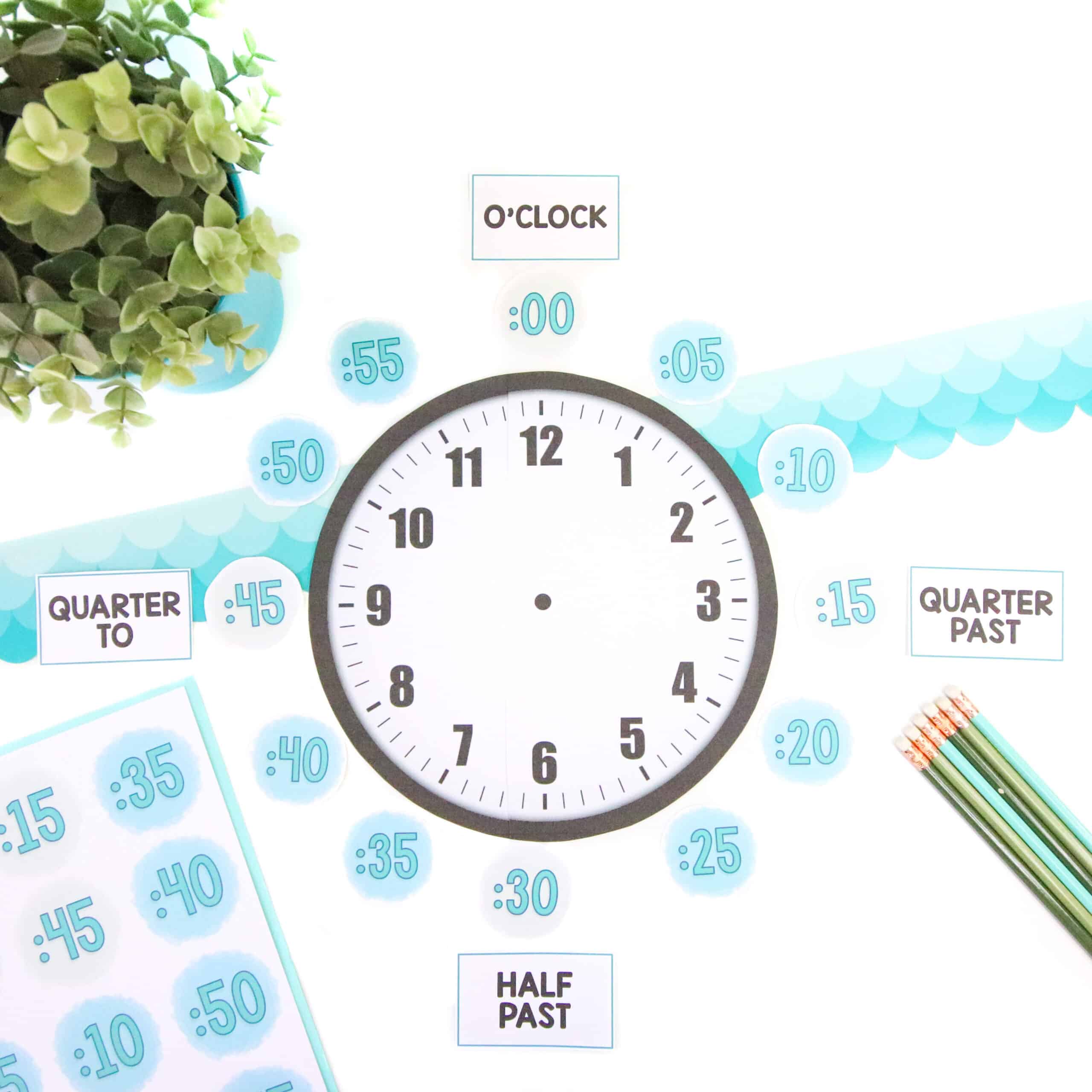
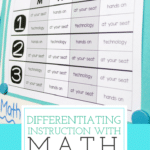
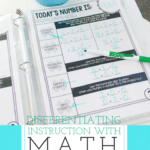
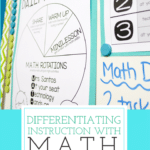
102 Responses
I am a 7th grade math teacher, and I am very interested in adapting your M.A.T.H. workshop to fit my classroom. It is very similar to Daily 3 framework that I have looked into. What do you do about homework? How do you assess/grade the work that students do in the rotations? Any help you could provide me would be greatly appreciated!
Hi Megan,
When it comes to homework, my students complete a set of problems that correlate with the content introduced in class that day. Homework is copied of the reverse side of the practice problems students complete in class (usually about 5-6 problems/day). The following day, students turn in homework, and I quickly check 2-3 problems that represent the skills practiced. I don’t grade homework because it is difficult to know if a student completed the work independently or with support, and if so, how much support.
As for assessing the work completed during their rotations – the technology rotation is automatically graded by the sites we use – IXL and Multiplication.com. The games are assessed via observation throughout the week (assessed on our district’s 1-4 mastery scale). At your seat practice begins with the practice problems mentioned earlier (which must be checked by me before being tucked away in the hw binder). The task cards students work on for the second portion of “at your seat” are turned in to our self assessment drawers (shown here) and then graded by me using our mastery rubric at the end of each week.
Please let me know if you have any additional questions.
Warmly,
Laura
I am very excited to try this in my 4th grade classroom. In your post, you mentioned preferring to pull groups as needed based on your formative assessments, how do you keep that organized? (Knowing who you pulled, if they finished their seat work,etc)
I also have 25-26 kids… do you have approx 8 students in each group then?
Hi Amy,
So happy to hear you are planning to try this with your fourth graders. Not sure if you are the same Amy that commented on the Instagram post about tracking the time spent with students/organizing groups. If so, please stop by Instagram to watch the story I will be posting tomorrow morning. 🙂 Here’s a general overview:
I have 25 students – approximately 8 students in each group to create a balance in the number of students rotating through activities. I have a few different tracking sheets that help me track formative assessment data each day (one of those recording sheets is shown at the bottom of this post).
I do prefer to pull groups as needed rather than having a set group meeting schedule. I find this helps me touch base with almost every student every day. The way this is achieved: students must have the 5-6 practice problems they complete during the first portion of “at your seat” checked for accuracy by me. We use a 1-4 mastery scale in our district, so I assess their work on that scale consistently. I also have large lined post its on my clip board where I jot notes for small groups I would like to meet with in the coming days based on observations as I work around the room to support students during game play and task card work.
There are times when I am moving around the room working one-on-one and gathering data on my clipboard and other times when I am at the back table with a group introducing enrichment content or reteach support.
I hope this helps with creating a visual – the instagram story will probably be more helpful than anything. 🙂
Cheers!
Laura
Did you post the Instagram story yet you mentioned in this reply? I’ve tried to find something that works in my classroom, both set groups and flex groups. I always find I want more time reteaching and less time meeting with my enrichment groups but I struggle with the organization of it all. I’ll be looking forward to reading more in your Instagram post. Thanks
Hi Amy,
Yes, it is up as a story right now. Go ahead and take a look and let me know if you have any additional questions.
Cheers!
Laura
Hi Laura,
I too am excited to try this in My Fourth Grade class. I noticed on the picture of your rotation schedule you only show M-Th. What happens on Friday? Sorry if I missed where you’ve explained that!
Hi Jeannine,
Have fun implementing M.A.T.H. Workshop in your classroom! We only get to do math four days a week because we have a very packed specials schedule on Fridays this year. It can certainly work five days a week… I only wish I had the time. 🙂
Laura
I understand! Scheduling is tricky. When I downloaded your schedule freebie I saw the suggestion of “choice”, I like that.! On Fridays we often do catch up time. I think I’ll have those two options for Friday as needed. Thank you so much!
I would love to try this out in my second grade classroom as well! I have been experimenting with various math workshop models this year, but I’ve haven’t exactly found a solid system that I like. I definitely think this could work in my classroom, and I love the station ideas. I think I could easily implement this system M-Th and use Fridays as a “catch-up” day. This is so great, thanks for the wonderful ideas!
Hi Megan, thank you for taking the time to share this kind and thoughtful comment. Wishing you all the best as you give this model a try. 🙂
Hi there! Thank you so much this is so
Helpful as I design my math workshop time. It looks like you give 10 min for each rotation, how do the 2 blocks work? So is group one doing at your seat and technology in that time? Or is it choice? I don’t always have an hour for math, so trying to manage the time. Thanks again!
Hi Jody,
You are very welcome. Glad to hear you find this helpful as your design your own workshop time. Each group has about 20 minutes for each rotation on our average workshop day (slightly shorter when we have a busy schedule).
I will use group 1 as an example to paint a clear picture of what that group does during workshop on Monday. As shown in the picture of the schedule, group 1 is slated to work “At Your Seat” and rotate to “Technology” on Monday. Therefore, the members of group 1 will do the following:
1. Join the whole class for the mini lesson (approximately 10 minutes)
2. Rotation 1 – “At Your Seat” (approximately 20 minutes)
3. Rotation 2 – “Technology” (approximately 20 minutes)
4. Join the whole class for sharing (approximately 5-10 minutes)
Please let me know if you have any additional questions as you get up and running. 🙂
Laura
Thank you so much! I really love this! I think I can only start with 10 minute rotations, but it’s a start. Again, this is an amazing resource….THANK YOU. Do you have the first picture, (MATH screen) available in your TPT?
Thanks!
Jody
I am specifically looking for the pie chart and
Hi Robyn,
I have had a few people ask for the pie chart, so I am working on making an editable and ready to print version. As soon as it’s ready (likely in the next week or so) I will email you with the link. Thanks for letting me know you are interested, that’s very helpful!
Laura
Hello. I noticed that students do 2 days of hands on practice a week. Do you use the same game/materials on both days, or do you change it to something new?
Hi Candice, they have a variety of games to choose from. I typically have four games available at a time to provide variety for the students. I use Math In Motion games, which you can get here.
I have noticed that 10 min is not long enough to introduce a new concept. Can I use this concept when my mini lesson is longer than 10 min?
Absolutely, yes. 🙂
When do you check the students 5-6 problems for accuracy before they turn it into their hw binder?
Hi Keale, I have the students show me their page as M.A.T.H. rotations are taking place. If I am planning to meet with a small group that I know will require a high level of my focus and attention with few breaks to check students’ work, I create a little answer key (which I keep at close to me) that allows them to check their own work.
Are you willing to share or sell your pie chart for stations i love it
Hi Sam, I have an editable version available here. Thanks for reaching out. 🙂
Hi, do you have a copy of the power point that is displayed on the board. Showing what MATH stands for ?
Very cool ideas
Hi Sarah, I don’t currently have the PowerPoint available but I am glad you let me know you have an interest.
Thanks for sharing your great ideas. I am so excited to get started with math workshop this year. I’d love the MATH ppt also!
My district uses Envision math as well. Do you teach the lesson in your 10 minute Mini? I’m trying to wrap my head around this part! There’s the Hands On Problem Based Learning before the lesson, then a lesson video, followed by Guided and Independent practice in the workbook. What parts do you use for the Mini lesson? Do you use other parts in different areas of your Math Rotations?
Hi Rachel, thank you for taking the time to message me. I do use Pearson EnVision Math.
When I plan my mini lesson for each day, I look over everything offered in the TE, and narrow it down from there. Pearson provides way more than I could possibly use each day, so I think of it more as a roadmap for pacing the skills my students need to learn. I am always thinking about what students need to be able to do independently by the end of the lesson and make decisions about what I’m going to use from EnVison based on that. Therefore, there are some days I use the PBIL, and other days when I don’t…on days that I do, it takes the place of a direct instruction style mini lesson, or is woven into my small group work.
I rarely ever use the lesson videos provided by Pearson because they do not engage many of my students. I will make a few exceptions, and provide them as a review or reteach to students who do enjoy them/find them useful (as part of At Your Seat rotation).
My students do not use the student edition/hardcover book, only the workbook/soft cover book with the tear out pages. I do pull some of the most valuable/rigorous problems from the hardcover book and weave them into my mini lesson – students complete those problems on their whiteboard during the mini lesson.
My students complete the reteach side of the tear out pages as the first portion of At Your Seat rotation (this is our computation check), before moving into task card or project work.
They complete the Practice side of the tear out pages as their homework that night.
I hope this is helpful! Please let me know if you have any additional questions.
I teach a dual grade level classroom. This means that I teach both 3rd and 4th grade math. I have been attempting to do this in an hour’s time period, but will likely extend this by about 15 minutes next year. This will give me a bit less than 40 minutes per grade level….how would this work for my situation? We are beginning with GoMath for our math curriculum next year and I have accumulated several games to use for stations.
Hi Anne, this is a great question and I’m hoping other readers might chime in as I have never taught a combo/dual grade level class before. Might it work to teach your 4th graders their mini lesson while third graders work on something independent like the Number of the Day Binder. Then switch – teach the 3rd graders their 10 minute mini lesson while 4th graders work on Number of the Day. Then have everyone move into the M.A.T.H. rotations from there? This would allow you to introduce content to everyone and then move into differentiated practice right away.
I’m interested to see if this could be done in a high school setting. Our classes are only 45 minutes though. What is your opinion?
I think that’s totally do-able. I bet high school aged students would get a lot of learning in with that amount of time and this structure. 🙂
School starts Monday and I am very excited to start these workshops! What is the best piece of advice you can give me to get this started smoothly?
I am wanting to implement this approach with my 7th graders for the coming school year. Do you do math rotations everyday or are there days you do whole group activities?
Hi Brenda. That sounds wonderful. I can imagine seventh graders would love this approach! I do math rotations almost every day with the exception of some special project work days when we are trying to wrap up a PBL unit.
Hey Laura,
I am going to be a first year 4th grade teacher this year and love your ideas for math workshop! On average, do you normally meet with just 1 group of students formally each day? If I were to pull students on an as-needed basis like you said you do, I was wondering what your general structure was for how much of the day you spend with a small group? Thanks for all of your help and ideas!
Do you have all of these resources available. I really like the digital rotation display as well as all your graphics.
Hi Megan, you can find the graphics in my TPT store here. My math projects are here. My math task cards are here. My math binders are here. Please let me know if there is anything else you are interested in. Cheers!
I was wondering g if you have materials for 5th and 6th grade or if your tpt items are for just the lower grades? I am interested and excited to use this with my class this year.
Thank you !!
Hi Tammi, I do not have 5th and 6th grade materials. Only grades 2-4.
Thank you for your fantastic blog and sharing your practice! Does math workshop run much the same in Grade 2? I am moving to second grade from kindergarten next year so I am trying to figure out what my expectations should be!
Hi Sarah, you’re very welcome. Yes, I ran math workshop exactly the same in second grade (I taught second for two years and just moved back to third this school year). Enjoy moving up to second grade. It is such a sweet age. They are so ready and willing to try everything, and love the feeling of being independent. 🙂
What do you use for preassessing your students prior to grouping? What data do you collect and how do you organize it?
Giving them a performance task at the beginning of the unit is a great way to preassess because it allows you to see how deeply students understand a concept. I will often use the same assessment for end of unit, or something very similar with a couple tweaks. All of my assessment questions are “transfer tasks” from my Problem Solving Task Card Collections. I use our district rubric to assess student understanding as outlined in this post. I group students based on their level of understanding.
I downloaded your m.a.t.h. daily schedule but I noticed there wasn’t a “work with teacher” time on the schedule. As you are observing kiddos in their stations, do you pull them to your table then no matter what station they are at? Or is it kiddos only at seat work? Does any of this make sense? haha
Hi Elizabeth, I prefer not to have a set work with the teacher schedule every week because I like the flexibility of calling students to the back table based on observations made during my mini lesson and during their work at the other stations. This also allows me to move around the room for one on one conferences on some days.
Hello! I have used a similar Guided Math Workshop station outline, but I like how you have explained it in this post. I am curious about your Math Workshop Schedule. I see there are 3 “rotations” that have two “stations” outlined for them. If I am understanding your schedule correctly, are students going through 3 rotations, for a total of 6 stations for each day? Or how do your students know where to go specifically? Are they timed at each station? I would love to hear how you apply this!
Thanks,
Jennifer (also a 3rd grade teacher) 🙂
Hi Jennifer, thank you for taking the time to message me. 🙂 The way the schedule works is that each group completes two stations per day. The numbers 1-3 are group numbers. Therefore, on Monday, group 1 does the “at your seat” rotation first, then the “technology rotation second. Each rotation lasts 15-20 minutes depending on the other elements of our school schedule that day. I blogged more about organizing groups and scheduled here. I hope this is helpful. 🙂
Hi can you tell me what you use for homework?
Our school uses EnVision California. I send the practice page from the student workbook home for homework.
I am so excited to use the M.A.T.H. workshop start up kit with my 5th graders this year. It appears that you have Math deadlines written on the whiteboard. Is this where you write what they must do by the end of the week or day? Do you require a set amount of task cards be completed during “at your seat” time? Do you give them a certain number of task cards to choose from each week? Thank you for all of your creativity and hard work!
Hello Brigid! Thank you for the kind words and enthusiasm. 🙂 The deadlines written on the board show students how many task cards they must complete each week, and when their project is due (if we are in the middle of a pbl unit). I typically require two Problem Solving Task Cards per week. These tasks require a great deal of detail and take the students multiple At Your Seat sessions to complete. I rotate my task card selection each week. They have four new Making Meaning Tasks and two new Challenge Tasks to choose from each week. Wishing you all the best as you get started with M.A.T.H. Workshop in your classroom!
Fantastic ideas! I have tried using differentiated math rotations in the past and really loved being able to better meet my students needs. My district adopted CA Math Expressions a few years ago and I am having trouble making it work with math groups. There are so many concepts in each lesson and our pacing guide doesn’t allow enough time for concept building as it is. Any suggestions?
Hi Susie, it might be worthwhile to create a pacing guide that you feel comfortable with and then align the CA Math Expressions lessons to that guide. I always think of the district math adoption as a tool bank that I can pull from to meet the needs of my student…never as something that dictates our schedule and pacing. I hope this tip is helpful.
Hi Laura! I am so on board with M.A.T.H. Workshop after finding your blog! We have already been in school for three weeks, so I am wondering if you have any tips on implementing the workshop into my classroom? Also, do you have a post that lists out how you introduce each station? Do you introduce them one at a time and build stamina for a particular rotation before you move on to another (similar to the Daily 5 model)?
Thank you!
Hi Kayla,
I am currently in the middle of an Instgram story series about this. 🙂 Do you follow my Instagram account? If so, be sure to check the top bar to find my stories each day.
Warmly,
Laura
I have a question…how much time do you spend after school planning all of this?
I usually spend about 20 minutes to plan math each morning.
Hi!
I love these rotation ideas and am working to incorporate them into my Intervention classroom. I work with middle school age students, so I am hoping to set a plan for them daily. What do you usually do on Friday or to wrap up the week for Math?
Hi Amy, for the past two years, I have not had workshop on Friday because we have P.E. scheduled during that time. If I did have a Friday math block, I would still run the full workshop model, but replace the mini lesson with a number talk. Students would also jump right into task cards and project during the at your seat rotation after the number talk.
Hello. I love the idea of this in my own classroom, but I teach Kindergarten! Will you add any resources for Kindergarten? My school is a STEM school and focuses heavily on centers and groups. I like to do centers and I was looking at this model for how I would like to organize my math centers. Any suggestions or help would be much appreciated!!
Hi Sam, I don’t have experience teaching Kinder, but a good friend of mine Holly from Research and Play is using this model in her kinder class, and has utilized the starter kit with success. I highly recommend following her on Instagram as she often does stories about how she runs math in her classroom using this model.
Warmly,
Laura
Hi Laura,
Is the PowerPoint slide shown at the beginning of the post what you usually have displayed for your students? Is the schedule posted on a bulletin board?
Thanks!
Hi Michael, yes the schedule is posted on a bulletin board and the PowerPoint is displayed with my projector. 🙂
Hi Laura, any tips on how to incorporate the technology component with limited devices? I only have 2 desktop computers for my 16 students!
Thanks!
Hi Kayla,
You could always have students working at the tech station set a timer and share the computer rotation time with other students. For example, if 6 students are assigned to the technology rotation for that day, you take that 18- 20 minute block of time and divide it by 3 so that each child in that group has six minutes of computer time. Maybe while they are waiting for their turn to use the computer, they can work on timed fact fluency using a binder with page protectors and pages of math facts.
Warmly,
Laura
Do you have any bloggers you suggest for secondary? for me you nail it! clean organized and simple, but i am middle and high school contracted SPED float.
Hi Jenn, thank you for reaching out. I highly recommend The Superhero Teacher for secondary. She has a very clean style. I am not as familiar with secondary SPED bloggers, but I will keep an eye out. 🙂
Warmly,
Laura
Hi!
I am trying M.A.T.H. Workshop in my third grade classroom and have a question about rotations. How do you manage the timing of all of the activities? I see that the schedule is set up so that each group of students participates in two activities per day. Do you simply split the time they spend at each right on half…20 minutes each? Or do you allow them to work more at their own pace? I tried it out today and one thing I notice right from the start was that students scheduled for at your seat/meet with teacher didn’t have sufficient time to do their math journal page at their seat because they were with me too long. And I don’t want to feel limited on the time I have to spend with them because I want them to do their journal page. I’m thinking of instead using this time to walk around and observe, and just visit with students 1:1 and assist on an as-needed basis, sometimes pulling them for a group. So, just curious about how you manage the timing of it all within the rotation portion of the block.
Thanks!
Amanda
Hi Amanda,
For me, I have used a timer and had some success. However, I prefer allowing students to move through stations at a different pace than my invitational groups. I work with my small groups until I’m done with the objective, at least within reason.
I know teachers who facilitate around the room, but for me the power of workshop is differentiating and getting to know the students. I prefer to have kiddos complete stations that reinforce previous concepts collaboratively.
Gary
I teach 6th grade and was wondering if you had any editable task cards?
Hi Jerri,
Thank you for reaching out. I do not currently have any editable task cards. I recommend checking out the TPT store called Teaching With A Mountain View for upper level task cards. 🙂
Warmly,
Laura
Hi there!! I am in love with your “Lesson Flow” Google Docs format. Do you have to purchase the whole Math Rotations kit in order to get this document? Have you thought about just selling that as a separate product? I really like this idea a lot. Did you come up with it yourself, or did you learn about it somewhere else?
Thanks in advance!
Hi Kristy, thank you for reaching out with the kind comment. The lesson flow is currently only available as part of the Math Workshop Starter Kit. It originated from a paper version I saw when observed a fifth grade teacher in our district two years ago.
Warmly,
Laura
Laura,
Thank you for responding so quickly!!! I appreciate that fast response! I really like the idea of giving students the opportunity to revisit a lesson on their own time. It gives them responsibility for the material being taught. I really like the idea of parents being able to access the materials as well. I know I’ve had parents say, “How do you teach this?,” or “That’s not how I learned how to do this. I’m not sure how to teach my child.” These videos will be super helpful!!
On another note, have you ever created videos for substitute teachers? I’ve seen on a blog, instagram post somewhere that some teachers will create ready made videos for substitute teachers. It’s in addition to the paper-sub plans that are written out. Have you ever done this?
Kristy, it is SO helpful for parents. 🙂 I’ve never created a special video for subs but I know Keri Brown from Enchanted Kinder posted something about that once.
Hi, would you happen to have any of these resources for a 4th grade class?
Hi Denise, thank you for reaching out. The majority of my resources are designed for second and third grade, but I do have a few fourth grade math resources here.
Warmly,
Laura
Your approach is absolutely brilliant! This makes me wish I taught 3rd grade!
I saw above that you reccomended The Superhero Teacher for middle school examples, but would you have any more suggestions? I teach 7th ELA Resource Room and this method and style is exactly what I am looking for. I would even consider purchasing and editing your starter pack to match the content and structure of my classroom.
Thank you for sharing!
Hi Meicha, thank you for reaching out with your encouragement. 🙂 A great content creator for middle school ELA is EB Academic Camps.
Hi. Do you think MATH Workshop could be implemented at the high school level? If so, I would love to hear some ideas for how?
Do you have any 5th grade math resources? Our school is departmentalized, so I teach four blocks of 5th grade math. This is my first year teaching 5th grade, any suggestions?
Hi Angela, I only have resources for grades 2-4 currently. 🙂
Hi! I wasn’t able to figure out to start a new comment thread so that is why I am replying to one. I was wondering if you have any reccomendations for first grade math workshop? Do you know fo any other educators that have a simlar flow or outline like you? I absolutley love the way you have you’re workshop set up as it seems so fun and engaging for everyone. However I am looking for first grade content – wondering if you know of anyone on tpt to refer to?
Hi Brooke,
I don’t know of any first grade teachers for follow the exact same format, but I do think The Brown Bag Teacher is an excellent resource for first grade math content. 🙂
Warmly,
Laura
Do you have any 4th grade math game bundles?
Hi Ashley, I don’t currently. 🙂
Hello!
I have been thinking about trying Math Workshop in my 2nd grade classroom. I teach in New York state and we use the Common Core Math Modules. Do you think that the workshop model will work with using these? If so, do you have any suggestions on how to make that work effectively?
Hi Ann, I am not familiar with Common Core Math Modules, but perhaps some of the other readers of this post might have some insight.
I notice your schedule says Monday-Thursday. What do you do on Friday?
Hi Alicia, thank you for reaching out. We do not have math on Fridays since there are specials scheduled during our math block. Therefore, I only teach math four days a week.
Wondering if you have the M. A. T. H. Posters or ppt. Available? Thank you!!
Hi Carina,
Yes I do have it available here.:)
Warmly,
Laura
Hi, I currently teach 6th grade. Do you think this math workshop approach would work in a 65 minute class period?
Hi Jordan,
Although I have not personally used it in sixth grade, I have had several sixth grade teachers use my resources and the structure successfully. 65 minutes is a wonderful length of time of implement this model. Here’s how you might set it up: 10 minute warm up, 20 minute rotation, 20 minute rotation, 10 minute share/exit ticket. The extra five minutes can be used to make transitions between the rotations.
Warmly,
Laura
Hi! I love all of your products!! You are soo thoughtful! This will be my first year teaching 2nd grade. My classroom will not have computers, the only technology we have is our active board (So I would like to do something along with it, which I am definitely coming up with!) Because it will take me some time to do this, could it be possible to implement technology later in the year and do multiple hands on activities instead?
Hi Sara, thank you for the kind message. I think having two hands on rotations while you get tech up and running is a brilliant idea! 🙂
I see you’re using Envisions, we have that, too, but I am 5th grade. Have you considered making games/centers/materials and such to go with the 5th grader level?
Hi Bobbie, thank you for reaching out. I currently specialize in resources for grade 2-4. Perhaps if I ever teach fifth grade in the future, I may start focusing on 5th materials as well. 🙂
Hi, this looks amazing and I would like to look at implementing as we are already using the readers/writers’ workshop model and would seem a natural progression. However due to a packed schedule we only have around 40 minutes of math each day, is it possible to tailor this approach to fit?
Hi Adam, 40 minutes will be a pretty tight squeeze, but here’s how I’d approach it:
10 minute mini lesson
15 minutes (rotation 1)
15 minutes (rotation 2)
I’d try to squeeze your warm up in during another time of day, perhaps during your bellwork first thing in the morning. 🙂